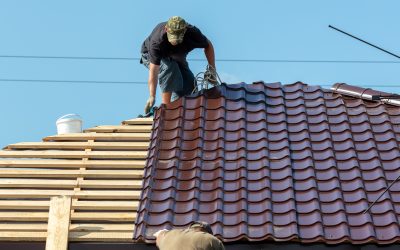One thing many roofing types have in common is asphalt, pitch, bitumen or petroleum based tars. In residential spaces, the roof is typically covered with a layer of decking, a membrane, usually made from tar paper or roofing felt, and a layer of asphalt shingles. Surprisingly, a number of commercial buildings use this method of roofing because the roof structure is pitched at a moderately steep angle. While the thin, three-tab shingle is fairly prevalent on most homes, there are better options, such as the composite shingle, that is also made from asphalt. For those who love to recycle and want to eliminate wasted rubber or plastic, there are some very tough roofing tiles made from these materials.
Commercial roofs are handled a bit differently, especially when the building is quite large, and the roof has a very low slope. In these circumstances, commercial roofing contractors have several possible repairs. The first is a simple patch over the BUR (Built Up Roofing) that is common on most large commercial buildings. BUR is a layer of hot tar placed over the joints and edges of the decking. The main purpose is to seal any cracks, but it also helps to hold down the membrane that covers the decking. These steps are required to keep the decking material from rotting. The next step is to coat the upper membrane with a layer of tar and add a layer of asphalt. Once the asphalt is spread and tamped in place, the roofer will place another layer of tar and cover this with an aggregate such as pea gravel.
BUR is a tried and true roofing options, but commercial roofing contractors are always looking for ways to benefit their customers. This where polymers come into their own. Membrane types that can take the place of BUR include EPDM (ethylene propylene diene terpolymer), PVC (Polyvinyl Chloride), and a few other plasticized materials for specific environments. To install a polymer membrane requires unique tools. For instance, a robotic seam sealing system quickly molds to edges together. These seams are practically as strong as the rest of the product. Small seams, such as those around details, are usually heated by hand to ensure proper closure. One great benefit to polymers is quick repair times. There is no waiting for the tar to heat. Instead, the contractor simply seals a patch in place. For more updates, visit our website.
Visit our Facebook profile for more information.








